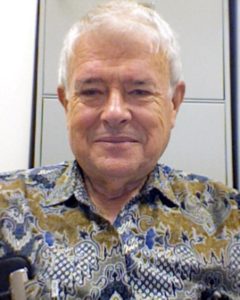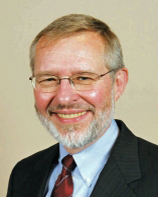 I take no exception to Jim Howland’s remarks in the last issue of this newsletter. His remarks went a long way towards explaining why CH2M HILL became a very successful international business in just a few decades after its founding. However, there is more to the story.
I take no exception to Jim Howland’s remarks in the last issue of this newsletter. His remarks went a long way towards explaining why CH2M HILL became a very successful international business in just a few decades after its founding. However, there is more to the story.
Jim mentioned that one of the success factors was employees who “joined the firm early and made it their career.” We maintained close working relationships with major professors at leading universities. We contributed funds to their programs and, in return, were given access to their best graduates. The very brightest were recruited, not for a project, but for a career! We set high standards for our entry-level folks.
Once onboard, we made sure everyone had a full range of project experiences. Even when we hired someone to be a process guru, like Dr. Glen Daigger, we made sure that person received the full range of project experiences. That included undertaking studies and construction inspection as well as design assignments “on the boards.” In addition to giving our staff a full range of project experiences, we gave them formal training in project management. We created well-rounded and fully capable project managers! Last week, I ran into a former client from Colorado Springs who worked with CH2M HILL and all our major competition. He said we had the best project managers in the business!
 Not only did we create CH2M HILL career-committed project managers, we also led our competition in technology advancement. I am speaking both in terms of the core engineering technologies at the heart of our projects and the technologies used to deliver them. Because we hired the best and kept them around for a career, we were able to develop trust in our staff. As an example, when I was a very young engineer, I had an idea of how we could do small secondary treatment plants at a lower cost to our clients than the old primary plants. I explained my views to the likes of Ralph Roderick and Sid Lasswell. They pulled together our leading engineers, giving me a full day to explain what I wanted to do in design of a then revolutionary plant. At the end of the day, they said: “Do it.” By the time Glen Daigger came on board, we were doing much larger plants. And Glen showed me where my science was flawed, and immediately we dropped the use of complete-mix activated sludge (at the core of my designs) for the likes of step-feed systems with anoxic and even anaerobic stages! CH2M HILL became successful largely because we hired people who could understand the science and did not fall for flawed technologies. Our rule was “Do not use any technology that we cannot prove scientifically.” I believe that rule continues to serve CH2M HILL well.
Not only did we create CH2M HILL career-committed project managers, we also led our competition in technology advancement. I am speaking both in terms of the core engineering technologies at the heart of our projects and the technologies used to deliver them. Because we hired the best and kept them around for a career, we were able to develop trust in our staff. As an example, when I was a very young engineer, I had an idea of how we could do small secondary treatment plants at a lower cost to our clients than the old primary plants. I explained my views to the likes of Ralph Roderick and Sid Lasswell. They pulled together our leading engineers, giving me a full day to explain what I wanted to do in design of a then revolutionary plant. At the end of the day, they said: “Do it.” By the time Glen Daigger came on board, we were doing much larger plants. And Glen showed me where my science was flawed, and immediately we dropped the use of complete-mix activated sludge (at the core of my designs) for the likes of step-feed systems with anoxic and even anaerobic stages! CH2M HILL became successful largely because we hired people who could understand the science and did not fall for flawed technologies. Our rule was “Do not use any technology that we cannot prove scientifically.” I believe that rule continues to serve CH2M HILL well.
Likewise, we reached out to stay near the leading edge of project delivery processes and technologies. Two examples put emphasis on formalizing our project delivery process and our early incorporation of CAE (Computer Aided Engineering). This would add greater value to our pro dream of seeing detailed design of a typical project reduced to a 2-week effort driven by parametric process/facility to advanced CAE programs that output not just 3-D designs, but associated databases including things such as quantities and estimates-of-cost as well. Can you imagine the value of this in design/build delivery models? When it is done, it needs to be done by CH2M HILL! It is in our genes!
